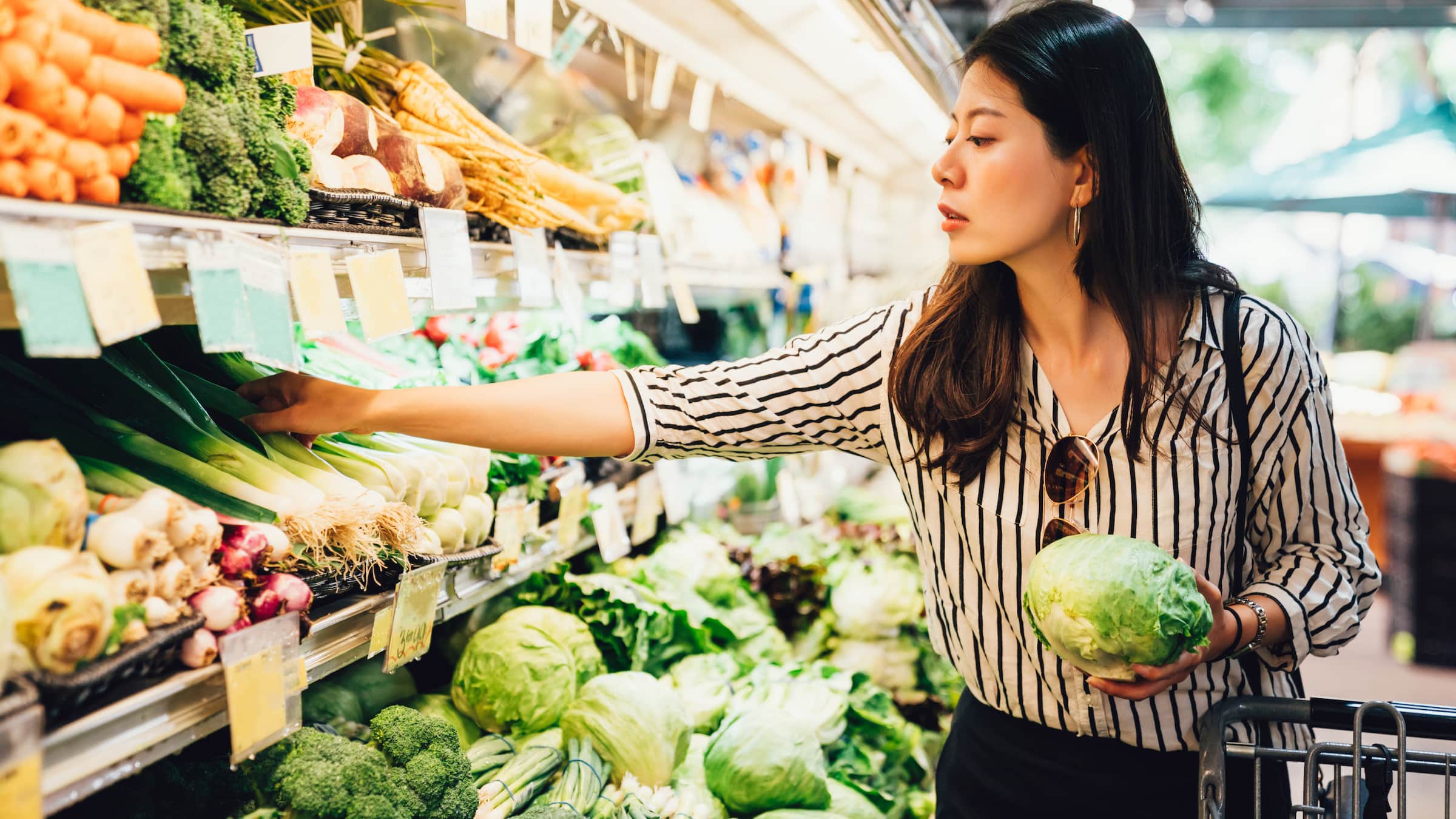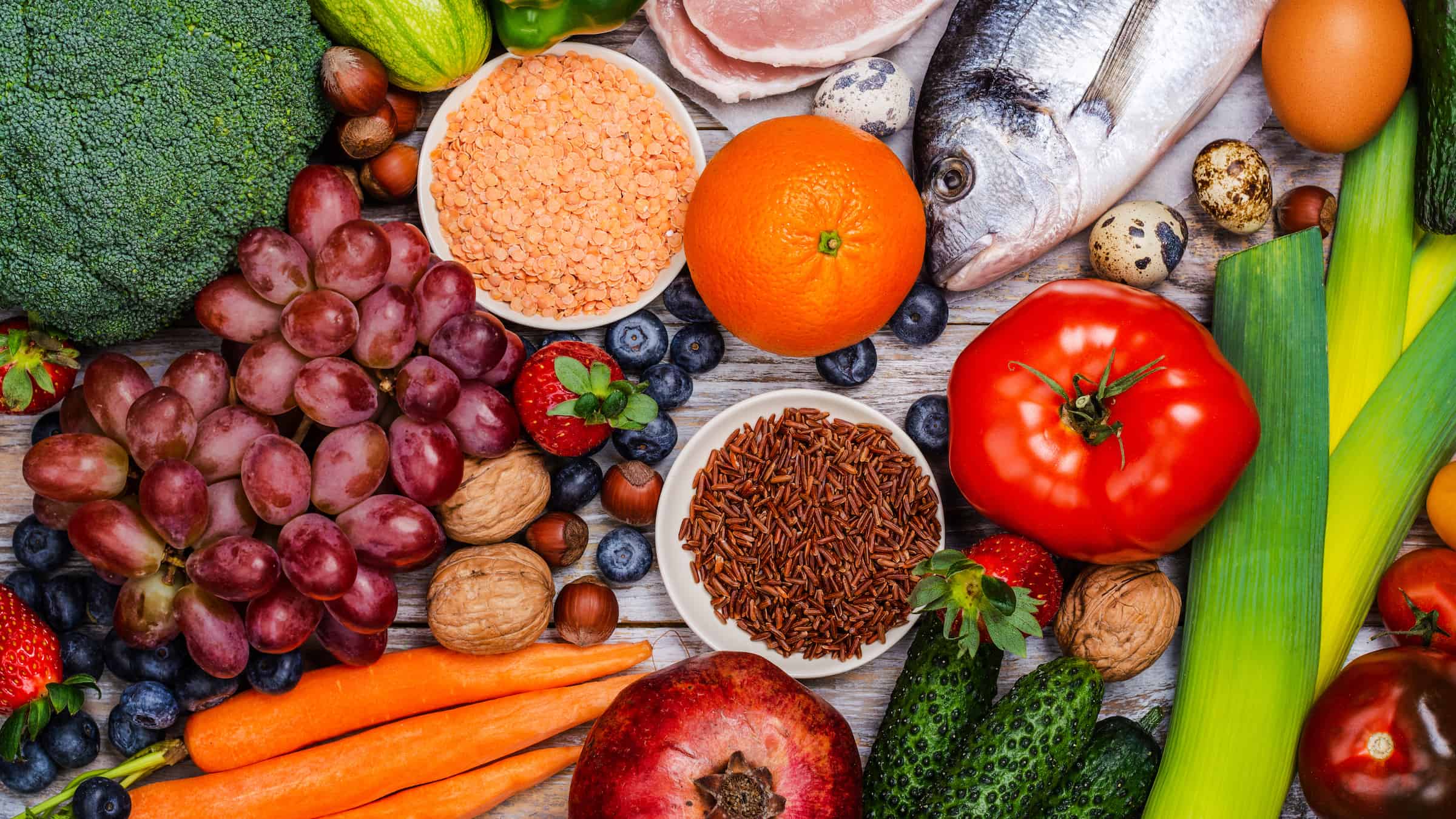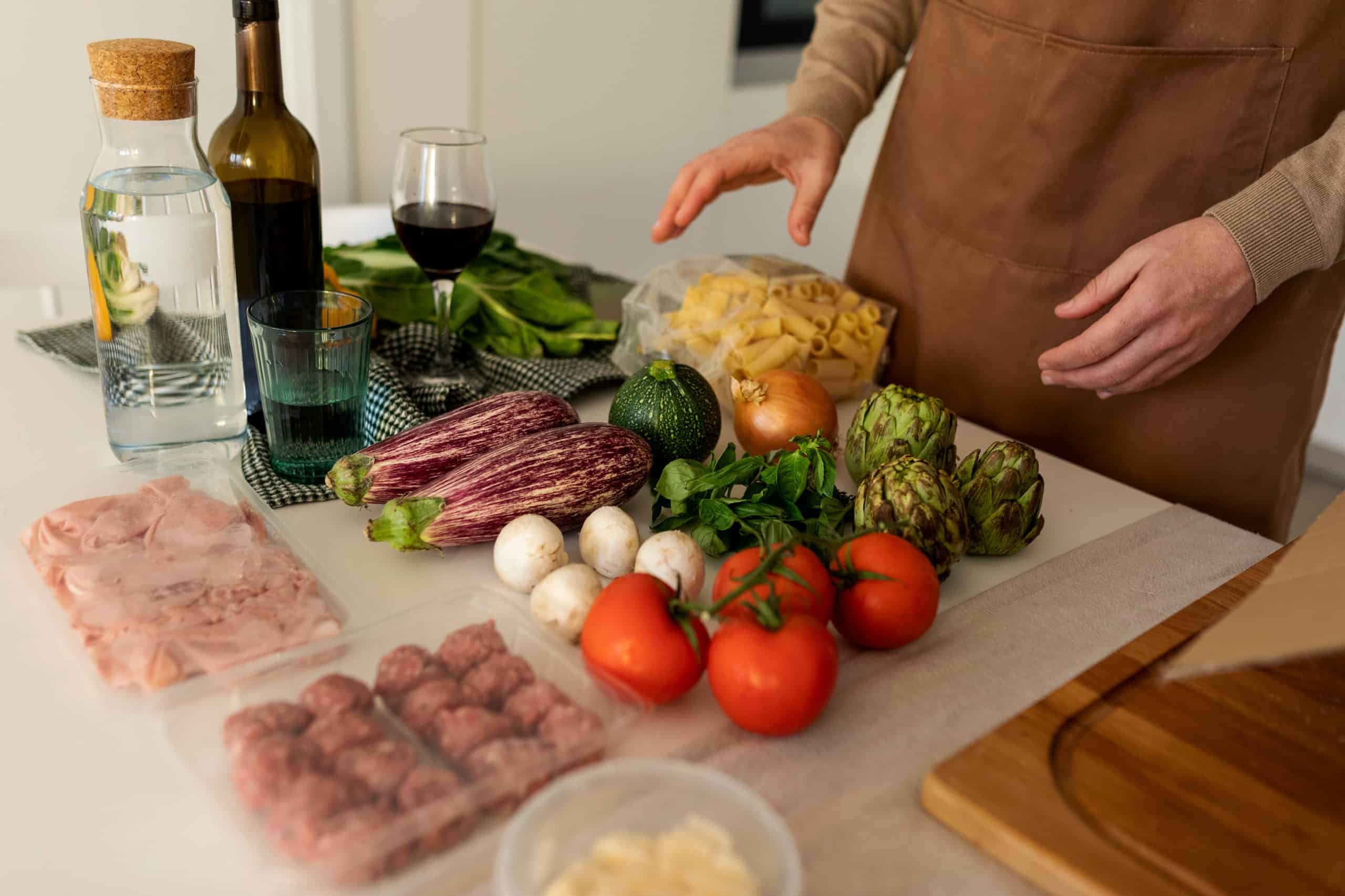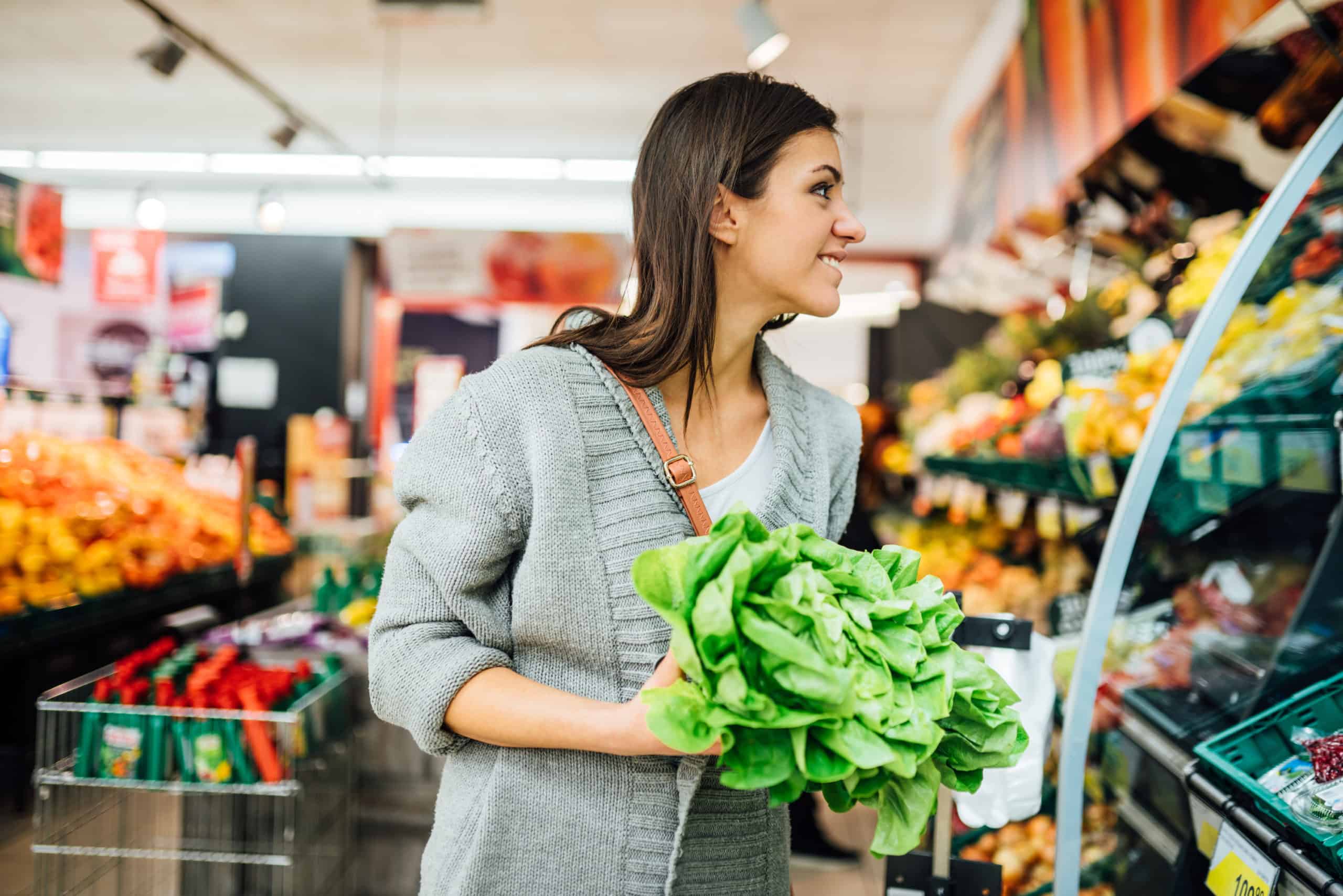- Grocery shopping on the Mediterranean diet means focusing on staples like veggies, fruit, fish, and whole grains.
- Your Mediterranean diet shopping list will include plenty of satisfying and nutrient-dense foods to create delicious meals at home.
- The Mediterranean diet isn’t restrictive, so with a little planning, grocery shopping can be quick and easy.
Following the Mediterranean diet? You’ll need a grocery shopping list to help you pick out the right items at the supermarket.
The good news is that the Mediterranean diet isn’t restrictive, so your shopping list will be full of foods that are delicious, nutritious, and generally available at your local store.
Noom wellness coach Ashley Bannister, MS, RDN recently shared with us her guidance on which foods you should add to your Mediterranean diet grocery list. Keep reading for her tips on navigating the grocery store while following this eating style.
Note: Consult your health care provider before making any dietary changes.
Mediterranean diet grocery list: 8 must-have staples
The Mediterranean diet is all about enjoying foods that were traditionally eaten by the people who live near the Mediterranean Sea, in countries like Greece, Spain, and Italy.
It’s based around vegetables, fruits, whole grains, and legumes, so Bannister says to focus on the produce section of the grocery store when stocking up.
You can also grab some of the foods that you already enjoy, since the Mediterranean diet isn’t restrictive. However, you should aim for moderation.
Here are eight staples to put on your next Mediterranean diet grocery list.
Vegetables
When you picture a traditional Mediterranean meal, it likely includes a lot of veggies. Think pasta with tomatoes, artichoke hearts, and olive oil.
Veggies are a major part of the Mediterranean diet and should be incorporated into each meal, according to Bannister.
Real results with a personalized weight loss program
Take the quiz!

Aim for three or more servings each day, with one serving being the equivalent of 1/2 cup of cooked vegetables or 1 cup raw.
Dark leafy greens are especially important on the Mediterranean diet, but here’s the full list of vegetables you can grab when you are grocery shopping for the Mediterranean diet.
- Artichoke
- Arugula
- Asparagus
- Beets
- Broccoli
- Brussels sprouts
- Cabbage
- Carrots
- Collard greens
- Corn
- Cucumber
- Eggplant
- Garlic
- Ginger
- Kale
- Lettuce
- Mushrooms
- Mustard greens
- Okra
- Onions
- Peppers
- Potatoes
- Spinach
- Squash
- Zucchini
Fruits
After you’ve grabbed all the veggies your heart desires, it’s time to stock up on fruit.
Fruits should also be consumed daily because they—just like vegetables—make up the base of the Mediterranean diet, Bannister says.
It’s recommended to eat three servings of fresh fruit per day, with one serving being the equivalent of 1/2 cup to 1 cup.
This means you’ll have a significant amount of fruit in your cart, which you can enjoy at breakfast, incorporate into your lunch and dinner recipes, or snack on between meals.
Here’s a list of fruits that are popular on the Mediterranean diet:
- Apples
- Apricots
- Avocados
- Bananas
- Blueberries
- Capers
- Cherries
- Clementines
- Dates
- Figs
- Grapefruits
- Grapes
- Lemons
- Melons
- Nectarines
- Olives
- Oranges
- Peaches
- Pears
- Plums
- Pomegranates
- Raspberries
- Strawberries
- Tangerines
- Tomatoes
Yes, both avocados and tomatoes are considered fruits.
Reflection exercise:
What are some fruits or vegetables from the lists above that you haven’t had in the past, but would like to include on your first Mediterranean diet shopping list?
Try including a new item each time you do your grocery shopping to expand your experience with the Mediterranean diet. Keep track of which fruits and vegetables you liked, as well as the ones you’ll probably avoid in the future.
Fish and seafood
Because of the easy access to fish along the Mediterranean coast, it’s a staple in the Mediterranean diet. So, get familiar with exploring the fresh catch of the day in the fish section of the meat department.
Bannister recommends eating at least two servings of fish or seafood per week, 3 to 4 ounces each. So, if you’re cooking for two, that means you should grab a pound or more of your favorite fish or seafood to get you through the week.
Fresh fish and seafood may not be readily available where you are. And even when it is available, it can be pretty pricey.
If you find that price is a barrier for you, try using canned versions of fish. Or opt for less expensive varieties—for example, tilapia.
Here’s an extensive list of seafood options to try that can be used in a variety of ways at each meal—yes, even breakfast.
- Branzino
- Clams
- Cod
- Crab
- Eel
- Halibut
- Lobster
- Flounder
- Mackerel
- Mussels
- Octopus
- Oysters
- Salmon (fresh or canned)
- Sardines
- Scallops
- Sea bass
- Squid
- Shrimp
- Tilapia
- Tuna (fresh or canned)
- Yellowtail
Beans and legumes
Beans and legumes are a main source of protein in the Mediterranean region.
And they can be used in numerous ways for Mediterranean diet cooking, including as the base of a meal or as an addition to a salad.
It’s recommended to eat at least three servings of beans and legumes per week, with one serving being equivalent to 1/2 cup. So, grab a can or two of your favorite beans, or a bag of frozen peas to round out the week.
Chickpeas, in particular, are a huge Mediterranean diet go-to, and they’re great as is or in hummus, so be sure to grab some of those, as well.
Here are some of the legumes and beans you can add to your Mediterranean diet shopping list.
- Black beans
- Black-eyed peas
- Cannellini beans
- Chickpeas
- Edamame
- Fava beans
- Green beans
- Hummus
- Kidney beans
- Lentils
- Peas
- Pinto beans
You can also look for bean and legume-based snacks to grab for a handy bite between meals.
Whole grains
You don’t have to be afraid of whole-grain bread and pasta when you’re on the Mediterranean diet. Whole grains make up a large chunk of the diet, Bannister says.
Whole-grain products have become widely accessible in recent years, so swapping things like white rice for brown rice, or white bread for whole-grain bread shouldn’t be too difficult.
Three to six servings per day are recommended, and that looks like 1/2 cup of cooked grains, one ounce of dry cereal, or a slice of bread. That’s a pretty substantial daily amount, so be sure to add plenty of whole-grain items to your Mediterranean diet grocery list for each meal.
Here are the whole-grain products you can pick up at the store:
- Barley
- Brown rice
- Bulgur
- Corn tortillas
- Couscous
- Farro
- Oatmeal
- Oats
- Pita bread
- Popcorn
- Quinoa
- Whole-grain cereal
- Whole-grain crackers
- Whole-grain bread
- Whole-grain pasta
Olive oil
Extra virgin olive oil is a product of the Mediterranean. It’s also been linked to benefits to heart health, which is why it’s prioritized on the Mediterranean diet, and other oils aren’t.
That’s why extra virgin olive oil (instead of butter) should become your main source of fat while eating a Mediterranean diet.
Try to use at least 1 tablespoon per day, but don’t exceed 4 tablespoons.
Check your pantry before heading to the store to see if you need to buy more, so you don’t find yourself empty when you need some for a recipe.
Nuts and seeds
A variety of nuts and seeds grow in the Mediterranean region, so it only makes sense that they’re a part of the diet.
They’re not just a common ingredient that you can incorporate into meals—they’re also a healthy snack option.
You should try to consume three servings per week, and portions depend on what you’re eating. For example, 2 tablespoons of nut butter are considered one serving, and 1/4 cup of nuts is also a serving.
Grab a tub of your favorite nut butter, as well as a few containers of your favorite nuts to throw in a salad or recipe, or just keep around as a snack.
These are some of the nuts (and their nut butter counterparts) you can look for at the grocery store:
- Almonds
- Cashews
- Flax seeds
- Hazelnuts
- Macadamia nuts
- Peanuts
- Pecans
- Pine nuts
- Pistachios
- Pumpkin seeds
- Sesame seeds
- Sunflower seeds
- Walnuts
Herbs and spices
Fresh herbs are big in the Mediterranean diet and are a great way to add flavor and excitement to dishes. Pick up some of these herbs to add to your recipes.
- Basil
- Bay leaves
- Chives
- Cilantro
- Dill weed
- Mint
- Oregano
- Parsley
Drinks
When it comes to drinks, water will be your go-to drink on the Mediterranean diet.
And while you can still enjoy your coffee and tea, try to limit the added sugar or cream.
Bannister adds that red wine is another option that’s allowed in moderation, which means about one glass per day.
What is not allowed on the Mediterranean diet?
Technically, no foods are off-limits on the Mediterranean diet, which is something we can get behind here at Noom.
However, processed foods, sweets, and certain meats are limited, according to Bannister. And these are items you’ll want to buy less frequently at the grocery store.
Here are some foods that you can still buy in moderation on a Mediterranean diet.
- Dairy products like feta cheese, milk, and Greek yogurt.
- Deli meats.
- Eggs.
- Poultry, including chicken and turkey.
- Red meat, like beef and pork.
- Red wine.
- Sweets.
How to grocery shop on the Mediterranean diet
Plan your grocery trip around the vegetables and fruits you love or would like to try. And from there, stock up on fish, legumes, and other staples of the Mediterranean diet.
Most Mediterranean diet–friendly whole foods are typically on the perimeter and in front of the aisles in a grocery store.
These six tips can help you maximize the Mediterranean diet grocery shopping experience.
- Meal plan and make a list
Having a plan is one of the easiest ways to have a successful grocery shopping trip.
Bannister recommends planning out your meals for the week and stocking up on groceries accordingly. This will help ensure that you have everything you need to make healthy and delicious Mediterranean diet-friendly meals.
This strategy could also help you save some money as opposed to the “grab everything in sight” method. Many of us are guilty of that and often don’t realize it until we’re at the checkout.
- Start with the produce aisle
Because vegetables and fruits are the base of the Mediterranean diet, you can go crazy in the produce section, Bannister says.
A good way to not break the bank is to keep an eye on weekly ads for your local grocery store to see which produce items are in season or on sale that week. Then you can plan your meals around those deals—it’s a win-win.
- Grab some herbs and spices
Bannister says to pick up some fresh herbs, like basil, parsley, and oregano, and spices for added flavor in your dishes.
Herbs will be in the produce aisle with the fruits and veggies. You’ll also find both herbs and spices in the seasoning aisle for more affordable and longer-lasting products to spice up your dishes.
- Look for Omega-3 fatty fish
Omega-3 fatty acids are beneficial for maintaining heart health, so it’s no surprise that they’re a key component of the Mediterranean diet. Bannister recommends looking for fish that are high in omega-3s, such as salmon, tuna, and sardines.
But if fresh fish are hard to find where you live, experts say that canned fish can provide just as many omega-3s as their fresh counterparts. So, don’t be afraid to stock up on canned fish to get your omega-3s fix.
- Check labels when it comes to grains
Not all grains are created equal—and on the Mediterranean diet, you’ll want to make sure you’re buying whole grain products. Check labels closely before putting grain products in your cart.
Look for the “whole” on grain products to ensure you’re getting whole grain products, Bannister says. It should state whether the product is made with whole grains near the top of the label.
- Follow chefs and influencers
Keep yourself feeling inspired to create delicious and exciting meals by doing a little research and following some social media accounts of famous chefs or food influencers who specialize in Mediterranean cooking.
Here are a few famous chefs who are known for whipping up dishes that showcase the Mediterranean way of eating.
Put your Mediterranean diet shopping list items to use
Now that you know what to throw in your cart (at the store or virtually) for your Mediterranean diet shopping list, it’s time to make some delicious Mediterranean meals.
Real results with a personalized weight loss program
Take the quiz!

We here at Noom love that you can grocery shop for the Mediterranean diet without having to worry about restrictions. And that opens the door to plenty of meals that are delicious and nutritious.
After shopping for the items on your Mediterranean diet grocery list, you can make a Greek yogurt parfait for breakfast, salmon wraps for lunch, and round out the day with ravioli with spinach, artichokes, capers, and sun-dried tomatoes for dinner.
Find those recipes and more in our thorough list of Mediterranean diet recipes to get those creative juices flowing in the kitchen. Bon appétit!



